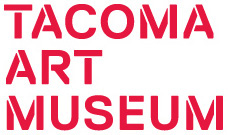Charles Schreyvogel
Born in New York City, Charles Schreyvogel spent his early years working as a meerschaum carver and an apprentice to a gold engraver to help support his family. He also earned extra money by teaching drawing and in 1887 was sent by two generous patrons to study in Munich. Upon his return to New York three years later, Schreyvogel met and befriended Buffalo Bill and began sketching the cowboys and Native Americans who appeared in Buffalo Bill’s Wild West. The artist traveled west for the first time in 1893, visiting Arizona and the Ute Reservation in Colorado. It was there he developed an interest in cavalry subjects, particularly skirmishes between the US Military and Native Americans. Schreyvogel traveled west repeatedly in the 1890s and began producing highly detailed images of western battles, but did not gain recognition for them until he entered his painting My Bunkie in the National Academy’s annual exhibition in 1900 and won. He continued to produce western paintings in his Hoboken studio until his death in 1912, often asking friends and neighbors to serve as models. Though he never gained as much fame as his contemporary Charles Russell, Schreyvogel is considered one of the great painters of the American West.


